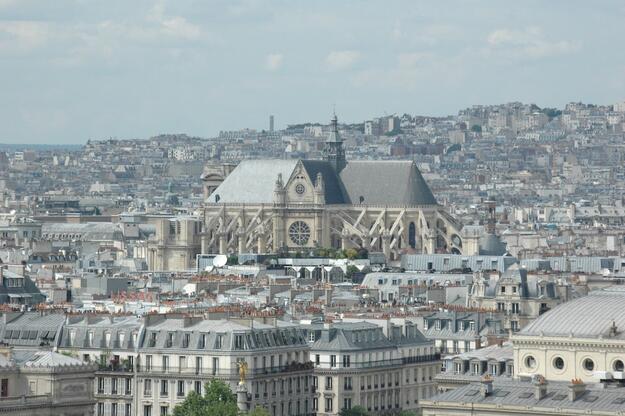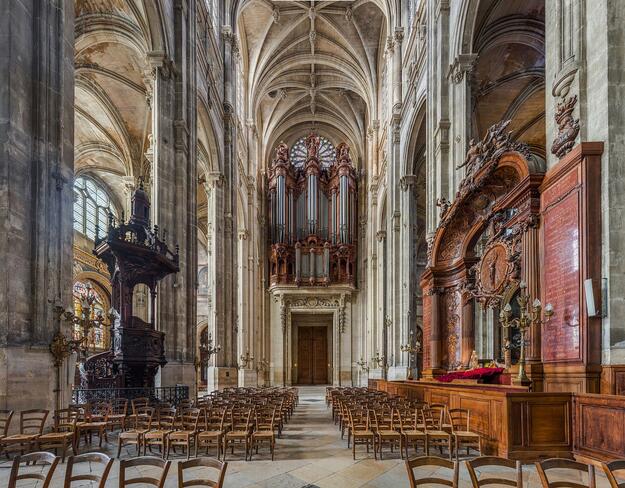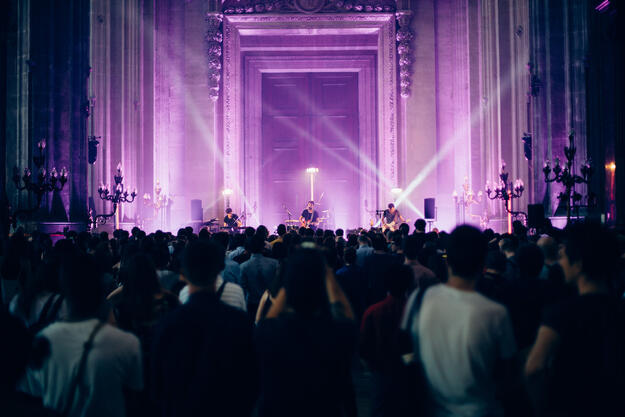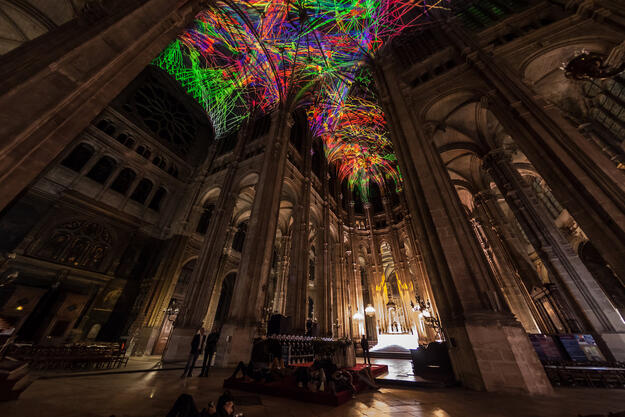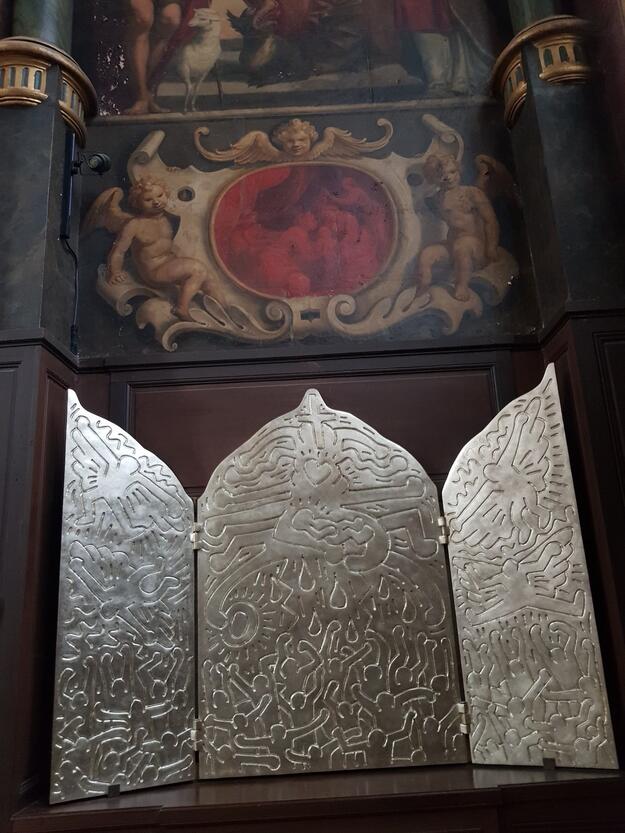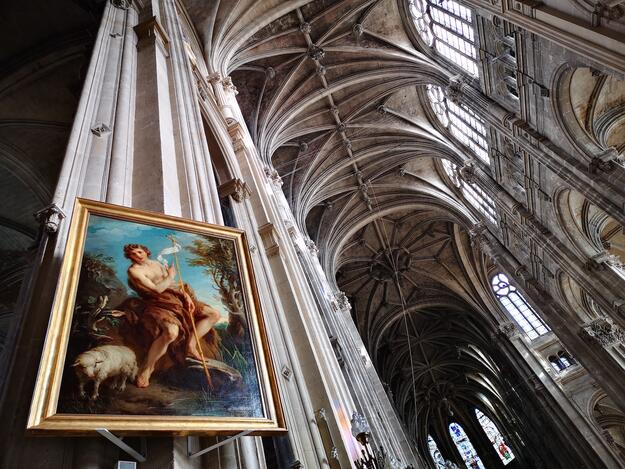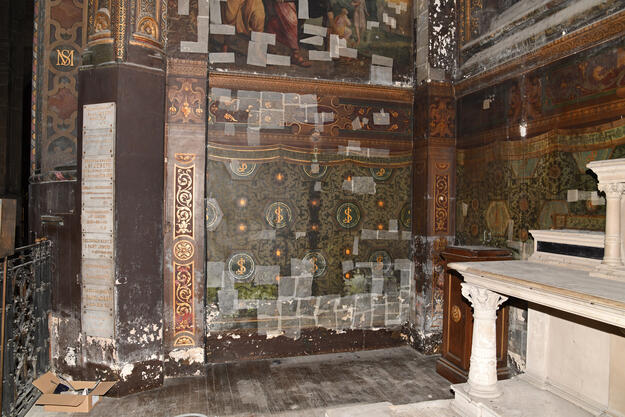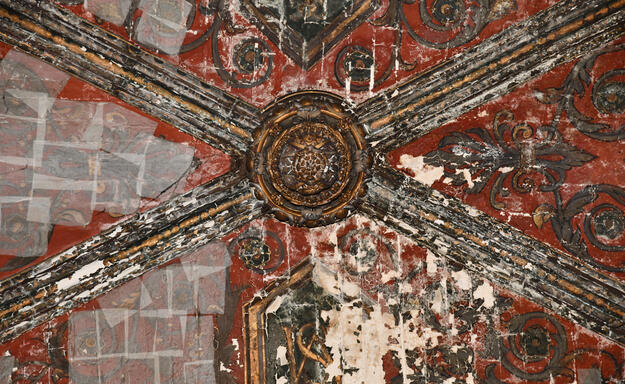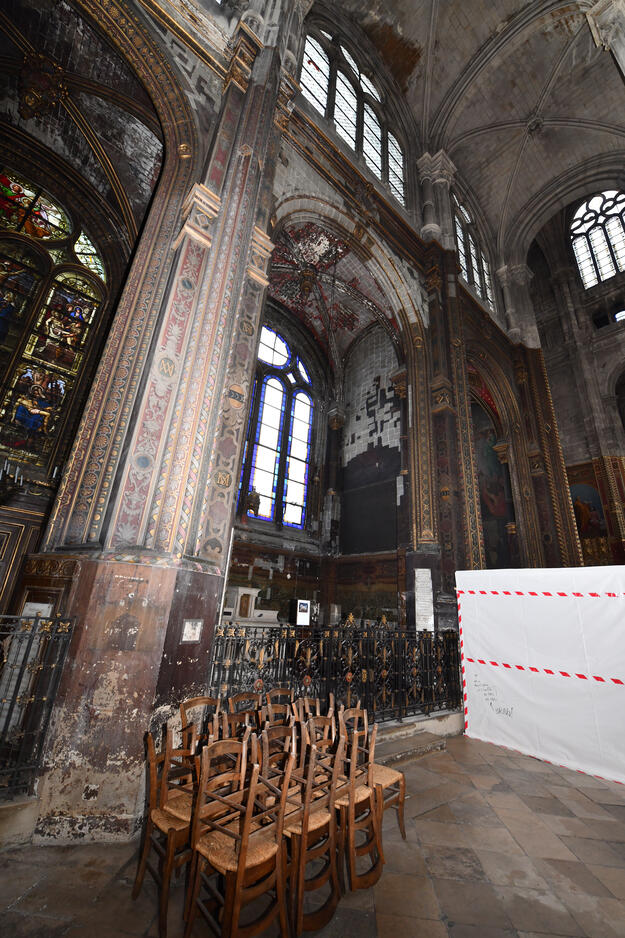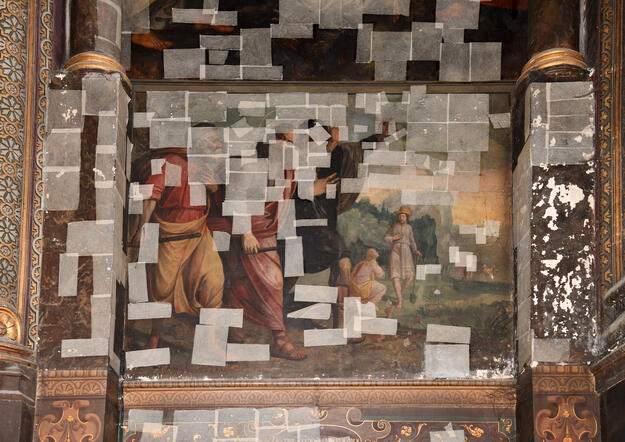Church of Saint-Eustache
Site History and Significance
An Imposing Masterpiece
The Church of Saint-Eustache was built between 1532 and 1637 at the request of French king François I. Located next to Les Halles (or “The Markets”), Paris’s historic marketplace, the church is an imposing Gothic architectural masterpiece featuring early-French Renaissance and Romanesque artistic elements as well as richly decorated interiors. Much of the church’s current structure dates back to its original construction, with the exception of its western facade, which was demolished in 1688. Its replacement, designed by Jean Hardouin-Mansart de Jouy, was never fully built and remains unfinished.
Bearing Witness to History
While serving as France’s royal parish from 1643 until the French Revolution in 1789, the Church of Saint-Eustache was the site of many historic events, such as the baptism of Cardinal Richelieu and the funeral of famed fabulist Jean de la Fontaine. After 1789, the building was emptied of most of its furniture, stripped of its status as a Catholic church, and subsequently affected by semi-abandonment. A devastating fire in the nineteenth century prompted the city of Paris to launch efforts to restore the site under the direction of architect Victor Baltard, who also designed the famed iron and glass structure of the Les Halles marketplace. During this time, Saint-Eustache regained its purpose as a religious and cultural establishment.
After the demolition of the historic structures of Les Halles by Baltard and the displacement of the food market to the outskirts of Paris, Saint-Eustache became one of the only structures standing to bear witness to the rich memory of this neighborhood, the “belly of Paris” as it was called by famous author Emile Zola.
A Center for Memory, Religion, the Arts, and Community Solidarity
Over the years, the church has become an important religious and community gathering place in the city’s historic center. In the 1980s, the church hosted one of the first church-based support groups in Paris for people living with HIV/AIDS. The triptych by Keith Haring housed in the church memorializes its place in the history of HIV/AIDS activism in Paris.
In 1984, the church launched its soup kitchen, La Soupe Saint-Eustache, that continues to serve hundreds of meals daily during the winter months to those in need. In doing so, it became an important center for social services in the city. Today, the Soupe Saint-Eustache distributes 250 meals every day between December 1 and March 31. La Pointe Saint-Eustache, an initiative launched more recently, aims to create a space for exchanges and activities that bring together local residents, volunteers, and people who are alone or without homes. Every week, the Pointe Saint-Eustache welcomes around 140 people.
The Church of Saint-Eustache has also developed into a cultural and artistic hub. While most of its older artwork was destroyed or disappeared after 1789, significant pieces survive, such as stained glass windows by Antoine Soulignac, a painting by Peter Paul Rubens, and a wooden chair and altar by Victor Baltard. The site also houses a small collection of contemporary art including an installation by John Armleder, and a sculpture by Raymond Mason. Concerts, music festivals, art installations, and other cultural events are also often hosted in the church’s main space. The site regularly presents concerts featuring its world-renowned Great Organ, one of the largest in France.
Our Involvement
The Future of the Church of Saint-Eustache
Innovative conservation and management approaches are needed to safeguard the church’s valuable artwork and enhance the use and appreciation of the space. In 2021, World Monuments Fund (WMF) began exploring with the leadership of the church development of a multi-pronged project to address its greatest needs, including the conservation of wall paintings and stained glass windows in the within the interior Chapel of Saint-Joseph, the development of a new visitor circulation and interpretation plan aimed at enhancing the visitor experience and understanding of the structure and its artwork, and adapting select interior spaces to better support the church’s social services and cultural events.
A Major Restoration Project
The conservation and restoration of the Chapel of Saint-Joseph, undertaken between September 2022 and summer 2023 thanks to the patronage of WMF, is part of a larger effort to restore the church on the part of the City of Paris.
This chapel, situated along the northern aisle of the church, had suffered severe damage to the painted decorations on its upper and lower parts as well as its vaults. The figurative paintings on its upper section were covered by a large number of Japanese paper appliqué pieces to protect the paint flakes that were at risk of following. The team of conservator-restorers, led by Ariel Bertrand, consolidated the paint surface before cleaning and retouching areas of loss. The vault paintings had greatly suffered from humidity, and the pattern was no longer visible. Decorative motifs dating from the nineteenth century and attributed to the painter Charles Sechan were reproduced in areas of paint loss, and gold leaf was added to revitalize the gilding.
The Rediscovery of Seventeenth-Century Frescoes
The project has allowed for the rediscovery of previously hidden figurative paintings, revealing scenes from the life of Christ: a scene of Christ walking with the pilgrims of Emmaus and a landscape showing two figures of the resurrected Christ. On the upper register, one can see the Assumption of the Virgin before the 12 apostles, who appear stunned by the act. Analysis of the binder has revealed that these mural paintings date to the seventeenth century and were subsequently covered by three layers of overpainting, likely dating to the nineteenth century, at the time of restoration work supervised by Victor Baltard, through to the middle of the twentieth century.
Learn More
World Monuments Fund safeguards cultural heritage around the globe, ensuring our treasured places are preserved for present and future generations.
Sign up for our newsletter to receive regular updates on our projects, stories from the field, upcoming events, and more!
![]()
World Monuments Fund's work at the Church of Saint-Eustache has been made possible, in part, by support from The Robert W. Wilson Charitable Trust and The Selz Foundation.

